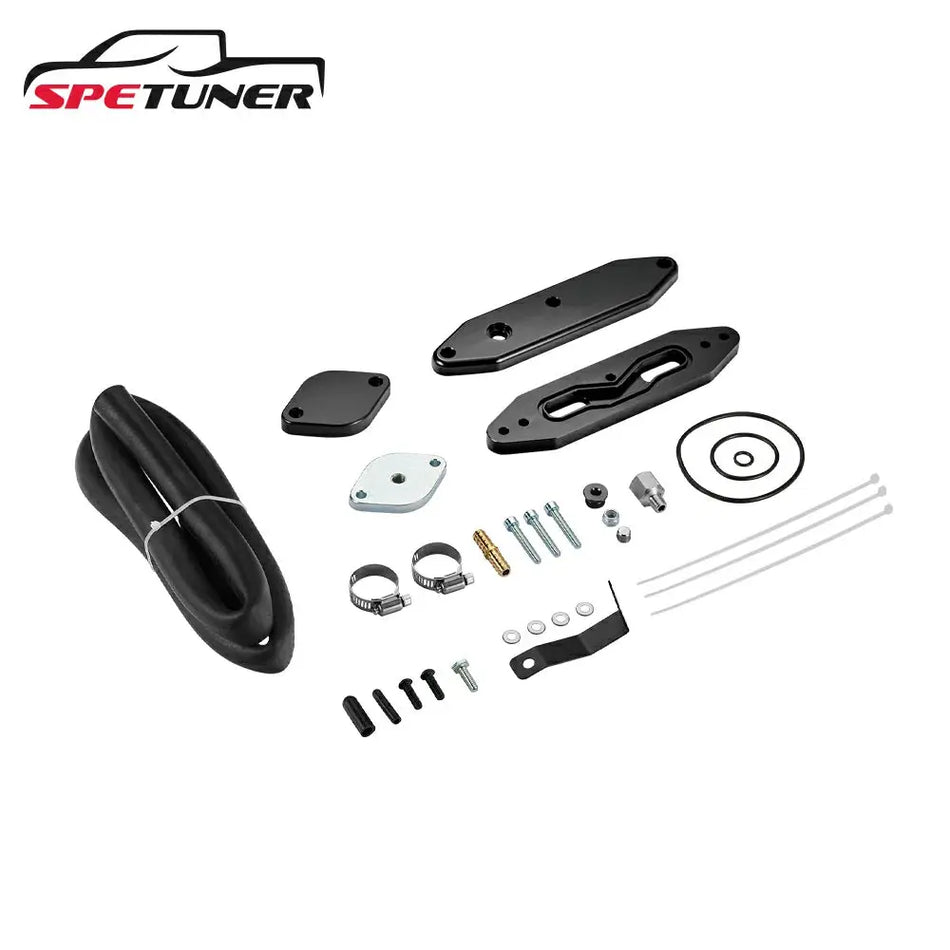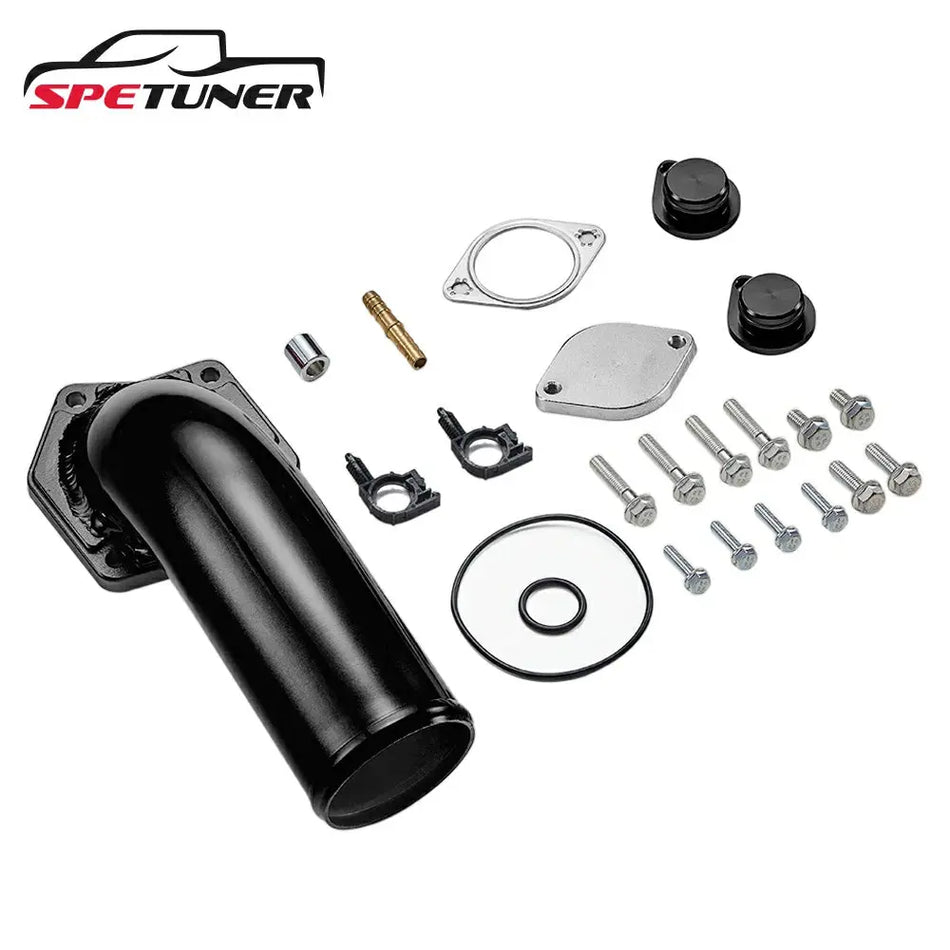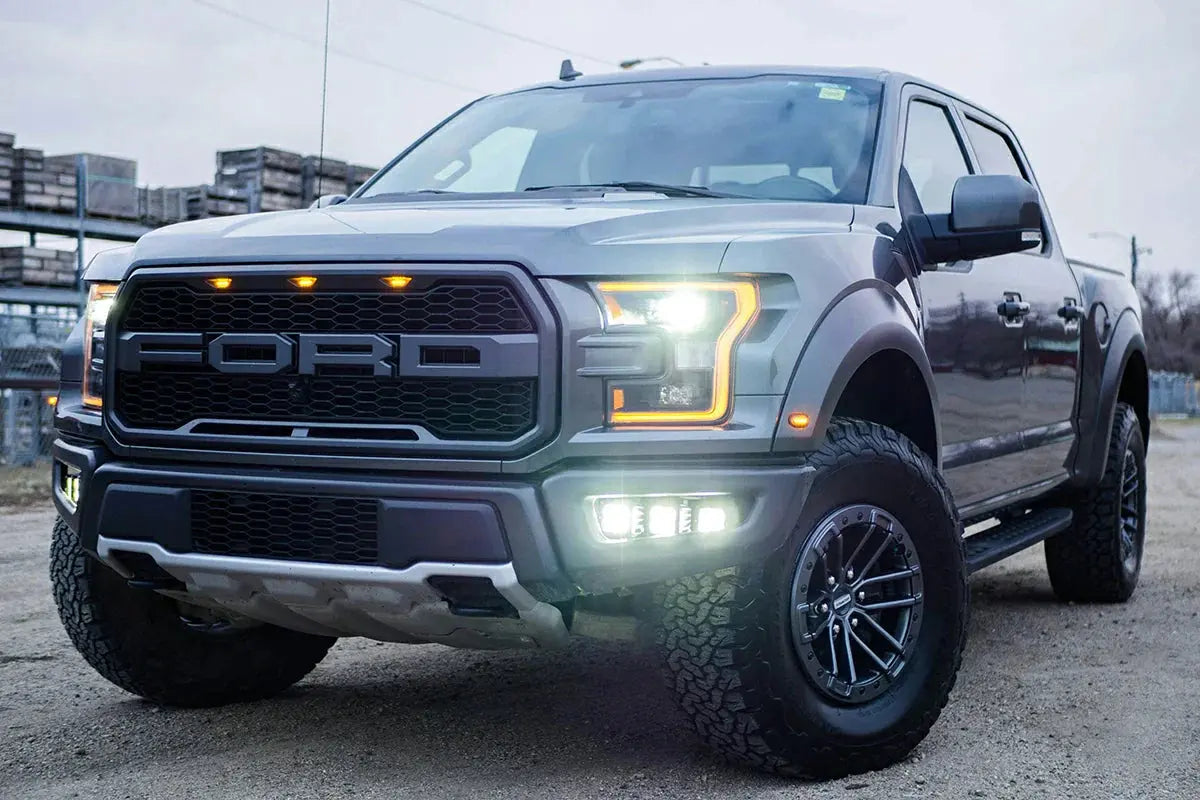What Does “Deleting” an L5P Duramax Mean?
If you're hearing the term "delete" thrown around in diesel circles, it’s not about erasing files—it's about removing the emissions control systems from your truck’s engine. Specifically for the L5P Duramax, deleting means eliminating components such as the EGR (Exhaust Gas Recirculation), DPF (Diesel Particulate Filter), and DEF (Diesel Exhaust Fluid) systems.
These systems are designed to reduce harmful emissions, but they also introduce complexity, increased maintenance costs, and performance limitations. By removing them, you're freeing the engine from those EPA-imposed restrictions.
But here’s the catch: deleting is only legal for off-road or competition use. If you're driving on public roads, it technically violates federal emissions law. That’s why most reputable tuners and kit sellers will emphasize: for off-road use only.
Another thing to know—you’ll need a tuner to reprogram the engine’s ECU once those components are removed. Without that, the truck will display error codes and may enter limp mode.
So in short, “deleting” an L5P Duramax means turning your emissions-regulated workhorse into a high-performance machine—but one that steps outside legal compliance if misused.
Comparing options? Start with our best L5P delete kit brand comparison.
What Are the Benefits of Deleting an L5P Duramax?
Now, let’s explore why so many Duramax owners consider deleting it in the first place. Once emissions systems are removed and the ECU is adequately retuned, the performance changes are instantly noticeable.
Power Gains
Deleting lets your engine breathe—and burn—more efficiently. Owners often report gains of 75 to 150 horsepower and a substantial increase in torque, especially when paired with a well-tuned engine.
Without the EGR pushing hot exhaust gases back into the intake, and with the DPF no longer clogging the exhaust flow, your turbo can spool faster and respond sharper.
Improved Fuel Economy
Here’s the sweet spot: many drivers see a 2- to 5-MPG increase, depending on their driving style. Why? Because regeneration cycles and DEF injection constantly force the engine to work harder under stock conditions.
Without those emissions processes, your L5P isn't wasting fuel to clean the DPF or compensate for soot buildup.
Fewer Maintenance Headaches
DPF failure. EGR cooler leaks. DEF pump errors. Sound familiar?
These systems tend to be the first to fail, especially past 100,000 miles. By removing them, you're sidestepping thousands in potential repairs and annoying CEL (Check Engine Light) issues.
Better Engine Longevity
With fewer hot exhaust gases recirculated and less backpressure in the system, internal temps stay cooler. That means your engine—especially turbos and head gaskets—will thank you over time.
Just remember: deleting is not a shortcut for poor maintenance. It’s a performance upgrade, not a fix-all.
What Are the Potential Problems of Deleting a Duramax?
While the performance gains are real, deleting your L5P isn't without serious trade-offs—especially if your truck still sees highway miles.
Legal Risk and Fines
Let’s get this straight: Deleting emissions equipment is illegal for on-road vehicles in the U.S. and Canada under EPA regulations.
Being caught with a truck that has been deleted during an inspection or roadside check can result in fines ranging from $2,500 to $10,000 or more, particularly for shops or resellers. Some states, like California or New York, have even stricter enforcement.
And no, just flashing the truck back to stock isn’t always enough. Trained inspectors often know what to look for.
Warranty Voided
If your L5P is still under factory warranty, deleting the emissions system is an instant disqualifier.
Dealers can detect deleted trucks—even if you reinstall the stock parts—and they’re not obligated to cover engine, transmission, or emissions-related issues after a tune or delete.
That’s a risk many owners don’t fully realize until it’s too late.
Reduced Resale Value
Trying to sell a deleted truck? Good luck, especially at a dealership.
Many buyers want emissions-compliant vehicles, and trade-in appraisers will often deduct thousands if your truck has been altered. Not to mention, reselling a deleted vehicle in many states is itself a legal risk.
Environmental Impact
Yes, deleting increases performance—but it also significantly ramps up emissions. That means more NOx, particulate matter, and carbon in the air.
If you care about long-term sustainability, this trade-off may be worth reconsidering, especially if you don't regularly participate in racing or off-roading.
What Do You Need to Delete Your L5P Duramax?
So you’ve weighed the pros and cons and decided deleting is the route for your truck, strictly for off-road or competition use. What exactly do you need to do it right?
Essential Components
Here’s the basic setup for a full delete:
- DPF Delete Pipe: Replaces the section of your exhaust where the DPF was previously located. Usually comes in aluminumized or stainless steel.
- EGR Delete Kit: Blocks or replaces the EGR valve and cooler. Some kits are full removals, others just reroute or cap the lines.
- DEF Tank Removal or Bypass Plug: Optional, but if you don’t plan on using DEF anymore, you’ll want to eliminate the system cleanly.
- Tuner (ECU Programmer): The most critical part. A high-quality truck tunes, such as EZ Lynk, MM3, or EFI Live, reprograms the truck’s brain so it won’t throw codes or limp when the emissions systems are removed.
Ensure the tuner is loaded with the correct tunes for your engine year and setup. Off-road tuning also adjusts fuel mapping, throttle response, and turbo behavior.
Spetuner all-in-one delete kit for L5P Duramax upgrades, including EGR, DPF def and tuner, everything you need for maximum durability, reliability, and efficiency.

DIY vs. Shop Install
If you’re mechanically inclined and have basic tools (wrenches, jack stands, exhaust hangers), you can do a full delete in a weekend. But it’s not plug-and-play.
Expect to spend 4–8 hours, depending on your experience and whether you're doing a full EGR delete or just the exhaust side.
If you’re unsure, a professional installation might be worth the cost. Most diesel shops will quote between $1,200 and $3,500 for parts + labor, depending on your region and kit brand.
Legal Disclosure & Best Practices
Even if your truck won’t touch public roads, you should still:
- Document the delete as off-road only
- Keep original parts stored and labeled
- Inform future buyers clearly if you plan to sell
That way, you stay above board with emissions regulations and retain resale options down the road.
Is Deleting Right for You? Who Should Consider It
Deleting isn’t for everyone. Let’s break down who stands to benefit—and who might want to steer clear.
Who Should Consider Deleting
If your L5P is used strictly for off-road, towing, racing, or farm work, deleting can be a game-changer.
You’ll benefit from:
- Increased reliability during heavy-duty use
- Better throttle response while towing large loads
- Less downtime dealing with regen cycles or DEF errors
Many rural or commercial operators go this route to avoid costly emissions-related breakdowns. If your truck is based in the countryside and doesn’t require emissions testing, deleting can be a practical investment.
Additionally, experienced diesel enthusiasts who understand the legal and mechanical implications often opt to delete and tune for maximum performance.
Who Should Avoid It
If your truck is:
- Still under factory warranty
- Registered in a strict emissions-testing state
- Likely to be resold through a dealer or trade-in
- Your daily commuter
...then deleting is likely not worth the risk.
You could lose coverage, rack up fines, or make resale a nightmare. Plus, with modern emissions systems improving on newer L5P models, the need to delete for daily use has lessened.
Real-World Owner Opinions
On forums like DuramaxForum or Reddit’s diesel subs, you’ll find split opinions:
- “Best thing I ever did for my 2020 L5P. Way smoother under load.”
- “Wish I’d waited. Now I’m stuck swapping parts back for inspection.”
Bottom line? Think long term. Consider your local laws, driving habits, and whether you’re ready to commit to being “off-road only.”
What Is the Biggest Problem with the L5P Duramax?
Before you even think about deleting, it’s smart to understand what issues L5P owners commonly face—and whether those issues justify a delete.
Sensor Failures and Check Engine Lights
One of the most frequent complaints from L5P owners? Sensor issues.
The emissions system relies on a complex network of sensors—NOx, EGT, differential pressure, DEF tank level—all working together. If just one fails or reads inaccurately, your truck may trigger a check engine light or go into limp mode.
And sensor replacement isn’t cheap. Some require dealer-level diagnostics and programming.
Regen Problems and DPF Clogs
The regeneration cycle is designed to burn off soot in the DPF. But in real-world use—especially with short trips or stop-and-go traffic—it doesn’t always complete.
This leads to soot buildup, more frequent regenerations, and eventually, DPF clogging. Once that happens, your truck will display codes and experience a drastic reduction in power.
High EGT and Soot Load
The EGR system reroutes hot exhaust gas back into the intake to reduce emissions. The problem? That same exhaust carries carbon and soot, which cakes up your intake manifold over time.
This leads to performance loss and higher Exhaust Gas Temperatures (EGTs), especially under load—bad news for turbo longevity and head gaskets.
Tuning Limitations
The stock ECM on the L5P (especially post-2019) is locked down hard by GM. Tuning options are limited unless you opt for unlocked ECMs or specialized tuners, which can be expensive.
This makes custom tuning—whether for deletes or performance—a more involved process than older Duramax models.
In short, the L5P isn’t a bad platform. However, the combination of emissions complexity, sensor sensitivity, and regen issues makes it a candidate where many feel deleting is worth it, provided it is done responsibly and legally.
Should You Delete or Not? Final Recommendation
Alright, you’ve seen both sides of the coin—so what’s the final word?
The decision to delete your L5P Duramax ultimately depends on how you use your truck, where you live, and what you're willing to risk.
🟢 When It Makes Sense
- You operate in non-emissions-regulated areas
- Your truck is used exclusively off-road or for towing
- You’re out of warranty and tired of emissions-related failures
- You want maximum performance with fewer long-term repair headaches
If that’s you, and you’re confident in handling the legal and mechanical aspects, a delete can unlock serious potential in your L5P.
🔴 When It Doesn’t
- Your truck is still under factory warranty
- You live in a state with emissions inspections
- You plan to resell or trade-in through a dealer
- You’re uncomfortable with potential fines or environmental concerns
In these cases, you may want to consider upgrading to emissions-friendly tuning or sticking with the factory systems until they genuinely fail.
📊 Pros and Cons Snapshot
| Benefits | Risks/Trade-Offs |
|---|---|
| + More power and torque | – Illegal on public roads |
| + Better fuel economy | – Void warranty |
| + Fewer emissions issues | – Reduces resale options |
| + Lower maintenance cost long-term | – Higher upfront cost + legal risk |
At the end of the day, this isn’t just a performance decision—it’s a legal and ethical one too. If you delete, do it smartly, safely, and keep it off public roads.
Frequently Asked Questions about Deleting the L5P Duramax
What are the potential problems of deleting a Duramax?
Deleting your Duramax may trigger legal penalties if driven on public roads, void factory warranties, reduce resale value, and increase environmental impact due to the removal of emissions controls.
What are the benefits of an L5P delete?
Deleting the L5P Duramax can lead to improved horsepower, better fuel economy, lower maintenance costs, and fewer emissions-related errors — especially useful for off-road or heavy-duty applications.
What do I need to delete my L5P Duramax?
You’ll need a DPF delete pipe, EGR delete kit, DEF tank bypass (optional), and a tuning device such as EZ Lynk or EFI Live to recalibrate the ECU. Professional installation or tuning is highly recommended.
What is the biggest problem with the L5P Duramax?
The most common issue with the L5P is its sensitive emissions system, including frequent sensor failures, clogged DPFs, and regen-related performance drops — all of which may prompt owners to consider deleting.
Is deleting an L5P legal for street use?
No. Deleting any emissions system is illegal for on-road vehicles in the U.S. and Canada. Deletes are only legal for off-road or racing applications.
Can you pass emissions with a deleted L5P?
In most states, no. A deleted L5P will fail both visual inspections and OBD tests, making it unsuitable for registration in emissions-regulated areas.
How much does it cost to delete and tune an L5P?
Expect to spend between $1,200 and $4,500, depending on your setup. This includes the cost of the delete pipe, EGR kit, tuner, and labor if professionally installed. Complete cost guide here: How much does it cost to delete my L5P Duramax?
Does deleting void my Duramax warranty?
Yes. Any emissions-related modification will void the powertrain and emissions warranty. Dealerships can detect deleted components even if you reinstall stock parts later.
Can I sell a deleted L5P truck?
Legally, you cannot sell a deleted truck for on-road use. If selling privately, it must be clearly marked as off-road only, or restored to stock before resale.
Is deleting my L5P worth it?
It depends on your usage. If your truck is used off-road, out of warranty, and you're looking for more power and fewer emissions-related issues, it may be worth it — as long as you understand the legal risks.









